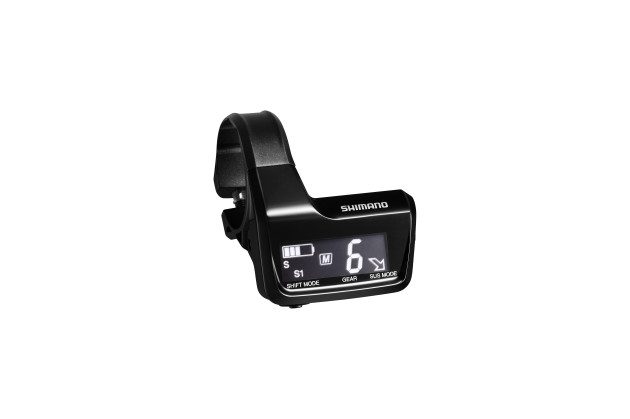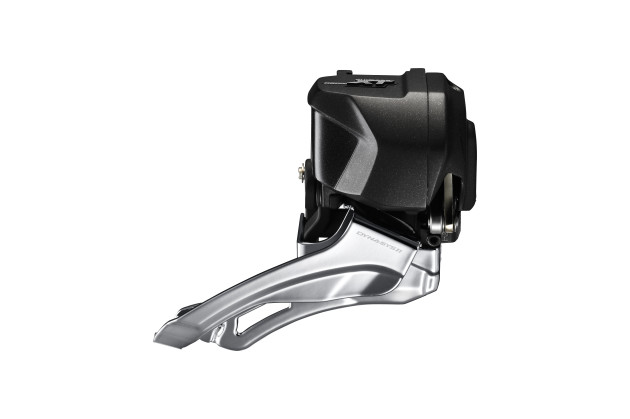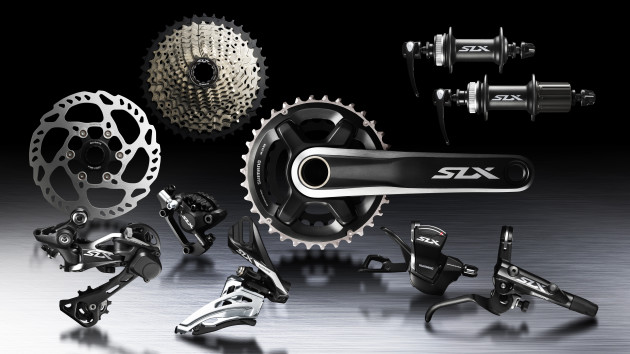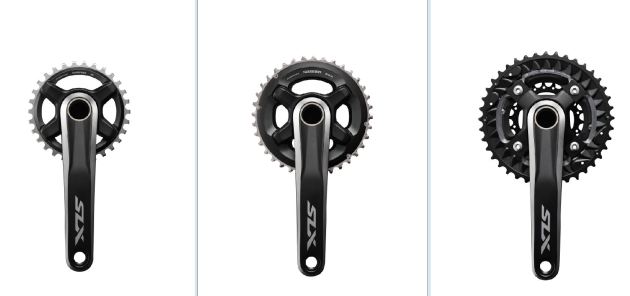XT Goes Electric & 11-Speed SLX
Shimano débuted their Di2 electronic shifting on the flagship XTR group, and now the long awaited trickle down begins. The popular XT M8000 mechanical group will now be complemented by a new M8050 Di2 version.

While most parts are shared with the 11-speed M8000 group – cranks, brakes, cassette and so on – the XT electronic shifting system is even brainier than the XTR version. The M8050 system allows you to connect wirelessly via their E-Tube program and adjust the shifting speed, change the number of multiple shifts achieved when holding the shift button down and vary the shift sequence when running a multi-ring drivetrain in ‘Synchro’ mode with a single shifter. These custom tuning options were always offered with XTR Di2 but the unit needed to be plugged into a PC to do it. With the right app on hand, you’ll now be able to make these changes on the go via a smartphone if you wish.

Additionally, the wireless ‘D-Fly’ data management system allows third party devices (bike computers etc.) to display data such as gear information and battery life. All of this new technology will be upwards compatible – in other words, current XTR Di2 owners will be able to upgrade if they wish.
Beyond these refinements, the function of the M8050 system virtually mirrors that of XTR Di2. The ‘Firebolt’ pushbutton triggers look just like XTR and can be setup in Synchro mode, so the one trigger will work both front and rear derailleurs.

Aside from weighing a few grams more than XTR, the derailleurs are near identical too. The wired electronic system is waterproof and the derailleur motors are twice as powerful as the road going Dura-Ace and Ultegra counterparts.
The system is said to equal the runtime of XTR too. Shimano says you’ll get several hundred kilometres from a full battery, and that’s in a worst-case situation; lots of shifting with a triple ring drivetrain and suspension controls also linked to the same battery. A full recharge takes just 90 minutes.
Best of all, we can expect the M8050 group to bring electronic gear shifting to a more attainable price point with very little performance loss when compared to the flagship group. If you're looking at the Di2 components on their own (derailleurs, shifters and battery), XT Di2 will set you back a little more than the equivalent XTR mechanical parts. Over the entire groupset (complete drivetrain, cranks and brakes), XT Di2 will cost less than an XTR mechanical groupset.

New Generation SLX
XT Di2 will attract the hype but the revitalised SLX group will impact on a larger number of riders. This is Shimano’s bread and butter performance level groupset; these parts compromise very little when compared with XT and XTR but they cost a lot less and you’ll find them on some truly affordable bikes.
Up until now, XT and XTR have been the only Shimano MTB groupsets with an 11-speed cassette. They were also the only ones to provide a factory single ring setup. Now with the new M7000 series parts, SLX comes fully up to speed with the other groupsets.

M7000 SLX will be an 11-speed group with either 11-40 or 11-42 cassette options. You’ll also be able to choose between single, double or triple ring cranks. If you do opt for a multi-ring setup (and if your frame is compatible), Shimano will offer a side-swing version of the SLX front derailleur for a lighter shifting action.
The brakes will be updated too, with slimmer profile levers that mirror the changes recently seen with the M8000 and M9000 series brakes.
Yes the parts will weigh more than XT – an 11-40 cassette weighs 467g for example, 50g more than XT – but it’s almost certain to perform just as well. It’s great to see Shimano now offering a wide-range 1X11 drivetrain at SLX level.


















